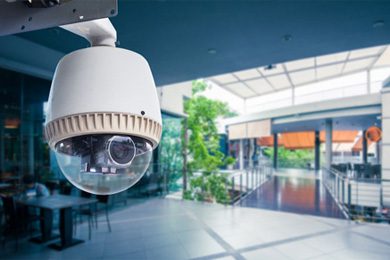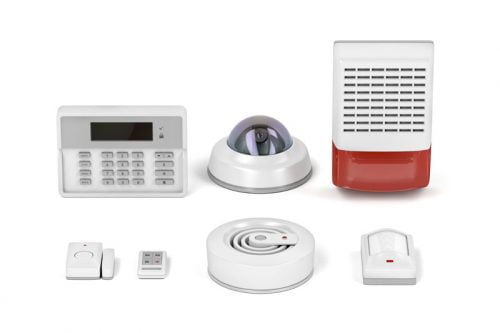
Security cameras are common in retail shops around Singapore. CCTV cameras are an important part of today’s retail security strategy, and they may make all the difference in terms of the protection of your customers, employees, and, ultimately, your reputation.
However, video surveillance is not a simple task. Its usage is heavily regulated by law, and you must always compare the advantages of monitoring against the legal work required to put it in place, as well as the effort required to utilize and maintain a security system.
If all of this seems overwhelming, we hope to be able to provide some helpful hints. Although the law is unclear, it’s ideas are not. You’ll be able to figure out what you need and how to make it happen in no time if you have a deeper understanding of the fundamentals.
The Benefits and Drawbacks of CCTV in Retail Shops
Are there any advantages to installing CCTV cameras in retail establishments?
Absolutely – for more than three decades, video monitoring has been an important part of guarding shopping malls.

What is the reason for this?
The most frequently stated goal of installing CCTV cameras in retail malls is to deter crime. Someone who could perform a criminal act — theft, violence, or any other crime – is hoped to avoid doing so in front of a camera. As a result, if individuals are aware that they are being watched, they will refrain from engaging in illegal or questionable behavior.
Is it effective? Scientifically, there is evidence that video surveillance deters crime in public spaces. However, research has revealed that the crime-deterrent effect varies greatly.
This implies that video surveillance can be a useful part of a security system, but it isn’t a panacea. Although CCTV cameras can impact behavior, they are not a physical barrier to crime.

Another significant advantage of using CCTV is the sense of security that their presence can provide. Customers may not be as concerned about shoplifters as you are, but they, too, might be victims of theft or assault while in a store.
The installation of security cameras denotes a particular level of security, which might improve the shopping experience.
However, the sense of security that CCTV cameras provide is a double-edged sword. It’s only useful to make your clients and employees feel safe if you can back it up with real security guarantees.
A poorly managed CCTV system might give your customers and employees the mistaken impression that they are safer than they are – a false sense of security that, experts warn, can actually provide thieves with an opportunity.
If all else fails, legally collected surveillance footage can give important evidence, which the police can use to recover stolen goods and track down culprits (this is the least “two-edged” benefit of security cameras).
Of course, the essential phrase is “lawfully obtained.” CCTV cameras provide not just advantages but also legal responsibilities. Failure to comply with these requirements can not only get you in legal problems, but it may also prevent you from using CCTV material in a legal setting, even if it is valuable.
Should I Install a Surveillance Camera?
So, do the costs and legal dangers of CCTV cameras outweigh the benefits?
One way to approach this is to highlight the considerable evidence that, at the very least, there’s no danger in employing CCTV cameras if they’re managed properly.
However, we believe that this is not the best method to approach the situation. The question is too broad to be meaningful because there are so many CCTV camera types with so many capabilities and integrated in so many security systems.
Instead, consider your objectives: who and what you want to defend, as well as what risks you face. This will help you figure out what sort of camera, how many, and what features you need from your surveillance system (if you even need one).
To put it another way, you want to know:
- What is the issue (Theft? Unauthorized access? Could it be an assault?) have an impact on the people (workers, customers) and commodities for which you are responsible?
- Is it likely that these issues will arise?
- What constitutes “solving” this issue (preventing theft or violence, for example)? Is it possible to find the perpetrator? Keeping accurate records?)
- What is the most effective method for resolving this issue? CCTV cameras are one option, but there are several others to consider, including lighting, physical obstacles, security guards, and alarms.
The following are some of the most prevalent circumstances in which CCTV cameras are used in retail environments, according to our experience:
- Keeping an eye out for shoplifters during business hours
- Defending against break-ins outside of business hours
- Protecting employees and customers from assault and theft, particularly at night, in rural places, or in places where criminal activity is high.
- Observing employees at work
According to a survey conducted by the National Retail Federation, 93% of retailers use CCTV in their stores for security purposes (source: NRF’s 2020 National Retail Security Survey). Additionally, the survey found that CCTV was the most commonly used technology for combating theft, with 83% of respondents citing it as an effective tool.
Another study by the Center for Retail Research found that CCTV can reduce theft in retail stores by up to 50% (source: The Global Retail Theft Barometer 2019-2020). The study also found that the cost of theft in retail stores can be significant, with an average loss of 0.78% of sales. CCTV can help reduce these losses by deterring theft and identifying perpetrators.
These scenarios cover a wide range of topics. This explains the wide range of CCTV camera models and functions available – but don’t worry, they’re a lot less daunting than shopping catalogues suggest.

On paper, choosing the correct camera based on your goal seems fine, but there are thousands of models and hundreds of features to consider. How do you choose the best one?
When looking at this, remember that CCTV cameras aren’t the only part of a security system, and that you can employ any type (as long as it’s legal) and as few or as many as you need.
There are four main ways in which camera models differ from one another:
- What they appear to be
- What are the conditions in which they work?
- What are the locations that they can cover?
- What image processing capabilities they possess.
This is where you should begin.
Let’s take a closer look at each of these components.
The design of the camera conceals more than just appearances, but it is the most fundamental factor. Some cameras (such as bullet CCTV cameras) have a bulky, generic appearance that makes them readily recognizable. Others, such as some dome camera models, are designed to be recognizable while concealing which way they’re “viewing.” Other models are made to be as difficult to recognize as possible, but as we’ll see in a moment, this might result in extra legal issues.
Where and when a camera can be utilized is determined by the environment. Some CCTV cameras, but not all, can be utilized at night since they have their own infrared illumination system.
The coverage of a single camera determines how large an area can be examined. Some cameras can only “look” in one direction at a time. PTZ (Pan, Tilt, and Zoom) cameras, for example, are mobile to some extent but have a limited field of view. 360-degree cameras can examine a large area, but their zoom and focus capabilities are limited.

Face recognition and automatic number plate recognition (ANPR) are image processing features that can enhance your surveillance capabilities, but they come at a cost.
When considering installing CCTV cameras at a shopping mall, the issue of cost will inevitably arise.
The cost issue is particularly thorny because it entails more than just the cost of the cameras. In addition to the cost of installing CCTV cameras, there may be costs associated with legal counsel or employee training.
In general, you’ll only be able to acquire a comprehensive idea of the prices after conducting a thorough inspection of the regions to be monitored and determining the technical requirements of your CCTV cameras. The cost of a CCTV installation is generally determined by the feature set and capabilities of the cameras and their software, rather than the type or quantity of cameras.
Because well-designed security systems are modular and upgradeable, you can add more security cameras with higher capabilities as your needs change.
The opposite is also true: if your needs are simple, a simple camera will serve. Many small enterprises, particularly tiny retail outlets, only require one or two well-aimed cameras and a simple archive system.
Periodic inspection and maintenance are required by any system, regardless of size. A broken camera might deprive you of crucial evidence in the event of theft; worse, it might give you a false sense of security, which a tech-savvy thief might take advantage of.
The potential for technology misuse is greater than ever in an age when hackers can manipulate autos, industrial control systems, or HVAC systems.
Legally Install CCTVs for Business Use in Singapore
In contrast to the installation of CCTV cameras for residential use, the installation of CCTV cameras for business usage is more problematic since businesses, unlike people, are subject to the Personal Data Protection Act (PDPA) (PDPA).
The collection, use or disclosure of CCTV camera video must comply with PDPA regulations if the camera will acquire personal data, such as footage from which persons may be recognized.
Overview of the PDPA
The PDPA imposes the following 3 requirements, among others, on organisations:
- Consent obligation: The organisation shall not collect, use or disclose personal data unless the individual has, or is believed to have, given permission to such collection, use or disclosure.
- Reasonable reasons requirement: The collection, use or disclosure of personal data must be for purposes that a reasonable person would deem suitable under the circumstances.
- Notification obligation: The organisation must inform the person of the aims of collecting, using or disclosing the data.
The next sections will discuss these requirements in the context of CCTV camera video.
The following sections will consider these obligations in the context of CCTV camera footage.
Can I install CCTV cameras inside or outside my business premises? What rules must I comply with when operating the CCTV cameras?
You may install CCTV cameras inside or outside your company premises. The PDPA does not restrict enterprises from installing CCTV cameras that record video outside the bounds of the company premises.
Nonetheless, you may be subject to PDPA duties depending on whether the premises where the CCTV cameras are to be placed are accessible to the public. This is because the PDPA exempts organizations from complying with certain responsibilities with regard to publicly accessible personal data, i.e. if the personal data is viewed at a site open to the public, with few or no access limitations.
In general, shopping malls, shops, or restaurants would be deemed publicly accessible business premises, whereas offices, where keycard access is necessary, would not be regarded publicly accessible business premises.
The following table provides a summary of PDPA requirements to be followed with depending on whether your company premises are accessible by the public:
| Consent obligation | Reasonable purposes requirement | Notification obligation | |
| Publicly accessible premises | You do not need to obtain consent from customers but it is good practice to do so. | You must guarantee that personal data gathered by the CCTV video is utilized for lawful reasons. | You do not need to notify customers that they are being monitored by CCTV cameras but it is good practice to do so. |
| Non-publicly accessible premises | You need to obtain consent from customers and should do so by putting up notices. | You must ensure that personal data collected by the CCTV footage is used for reasonable purposes. | You need to notify customers and should do so by putting up notices. |
Considerations when complying with the consent and notification obligations
It should be noted that regardless of whether your premises are publicly accessible, if you intend to install the cameras outside the business premises in an area that is not publicly accessible, you must comply with the consent and notification obligations as outlined above.
Guidelines for putting up notices
You may set up signs at access points of the property notifying people that CCTV cameras are being used to capture their personal data.
This will meet the notification duty under the PDPA as well as the consent obligation, since a person who reads the notice is presumed to have supplied his consent upon admission.
As a general rule, the notification should not just feature a picture of a CCTV camera but should additionally specify the purpose of the CCTV camera if the reason is not evident (e.g. “installed for security purposes”).
Considerations when complying with the reasonable purposes requirement
This duty must be followed with for the installation of CCTV cameras in both publicly accessible and non-publicly accessible commercial locations. To comply with this responsibility, the organisation must examine whether the amount of attainable coverage is acceptable for the purpose of installing the CCTV cameras.
As indicated above, the PDPA does not restrict the installation of CCTV cameras outside the company premises. Nonetheless, you should take extra care to verify that any such installation complies with the reasonable reasons criterion. This is because it may be more difficult to justify comprehensive CCTV camera monitoring outside the company premises.
For example, if the aim of CCTV cameras is to protect the security of a factory, it may be regarded reasonable for the CCTV cameras to additionally collect video extending outside the business (e.g. the film would offer information on how trespassers accessed the premises) (e.g. the footage would provide information on how trespassers entered the premises).
On the other hand, if the amount of coverage would not be regarded reasonable, the organisation may be in violation of PDPA responsibilities.
Places where you should not install CCTV cameras
- Bathrooms: It is illegal to install CCTV cameras in bathrooms or any other areas where people have a reasonable expectation of privacy.
- Employee break rooms: Like bathrooms, employee break rooms are areas where employees have a reasonable expectation of privacy, and it would be illegal to install CCTV cameras.
- Changing rooms: Changing rooms are private areas where customers may change clothes, and it is not appropriate to install CCTV cameras in these areas.
- Cash registers and payment terminals: While it may seem like a good idea to install CCTV cameras at cash registers or payment terminals, doing so may create privacy concerns for customers as they enter their personal and financial information.
- Any area where confidential information is discussed: If a retail shop handles confidential information such as employee records, customer information, or financial information, it is important to ensure that CCTV cameras are not installed in those areas to protect the privacy and security of that information.
- Any area that may violate the privacy rights of individuals: It is important to consider the privacy rights of individuals when installing CCTV cameras in retail shops. Areas where individuals may be undressing, engaging in intimate conversations, or engaging in other private activities should be avoided.
Conclusions and Recommendations
The use of CCTV systems in retail malls has numerous advantages. The benefits of robust, widely deployed technology include crime prevention, a better shopping experience, and the ability to acquire evidence.
At the same hand, deploying CCTV systems entails a significant amount of moral and legal responsibilities. CCTV cameras are readily available and accessible, but the decision to deploy them must be carefully considered.
